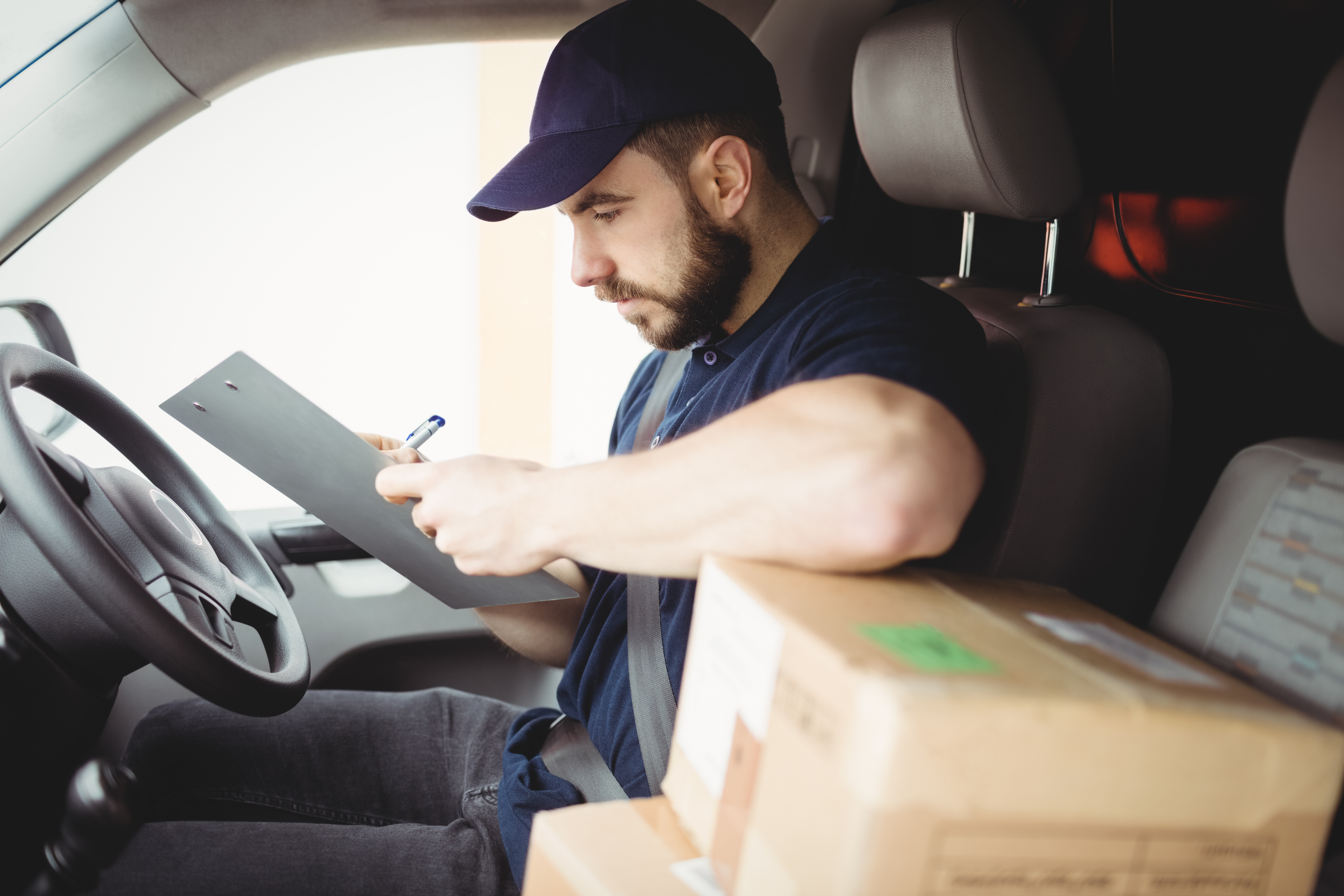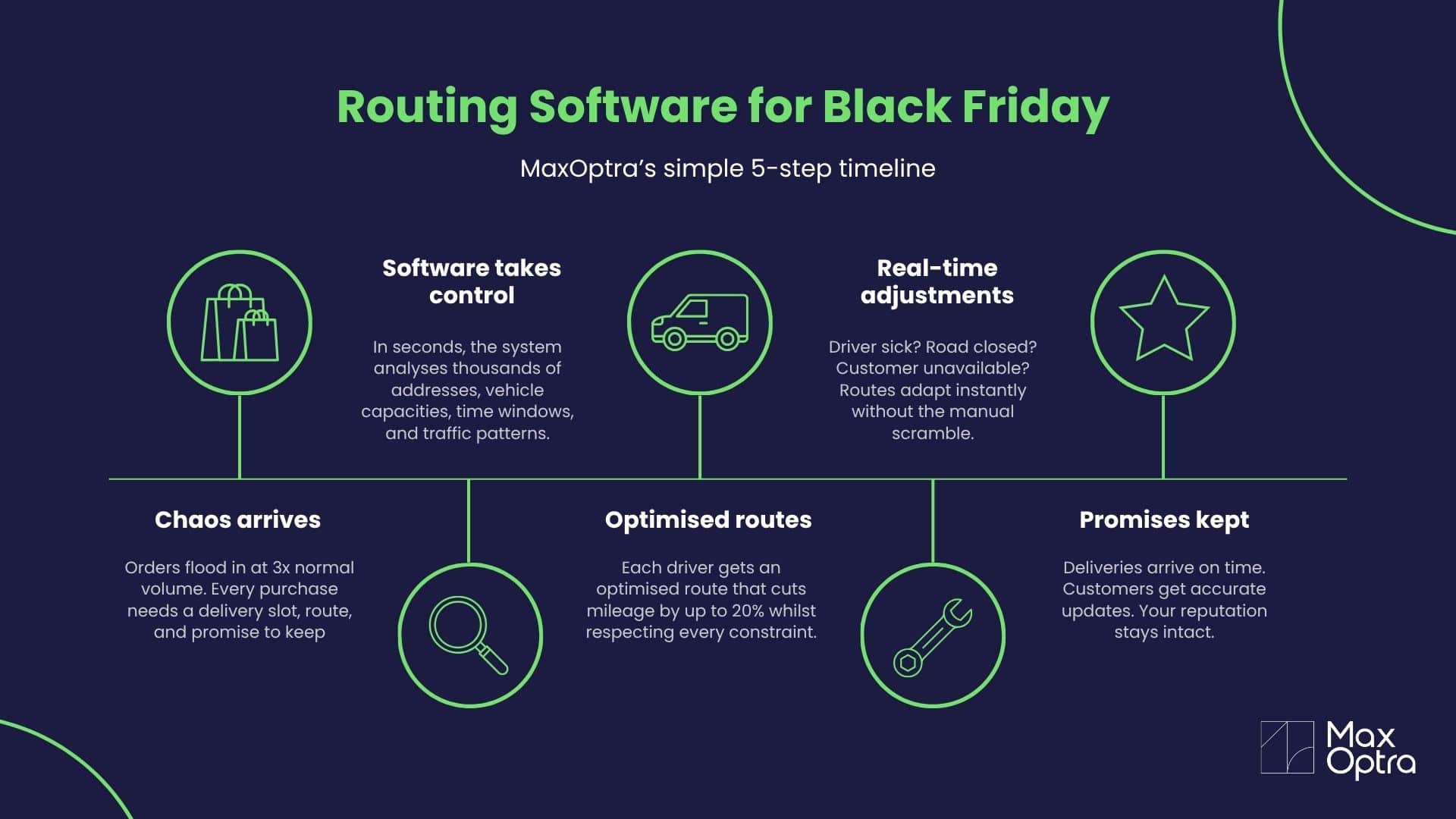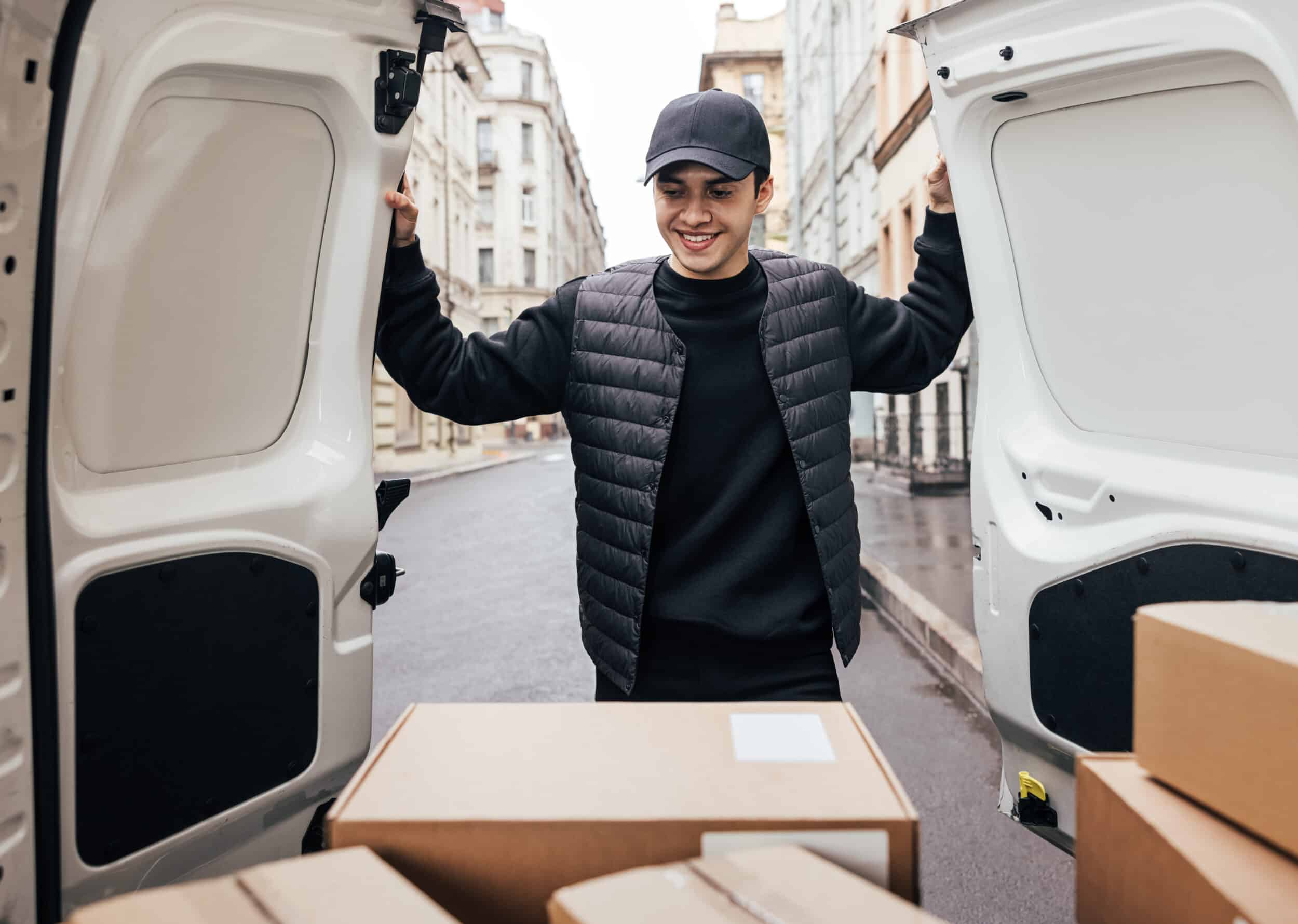Black Friday chaos: why routing software is the unsung hero of smooth deliveries

Table of Contents
- Using routing software for Black Friday
- The hidden cost of winging it
- What routing software actually does (in plain English)
- When everything goes wrong (and how software keeps you afloat)
- The customer experience you didn’t know you were missing
- The environmental case nobody talks about
- The simple truth about competitive advantage
- Planning for future Black Fridays (starting now)
- Ready to transform your Black Friday deliveries?
- Routing software for Black Friday – FAQs
Using routing software for Black Friday

It’s 6:47 AM on Black Friday. Your Logistics Manager refreshes their screen for what feels like the hundredth time. Orders are flooding in at triple the normal rate. Their coffee’s gone cold. And somewhere in the back of their mind, there’s a nagging question: can the delivery fleet actually handle what’s coming?
By 10 AM, the chaos peaks. Between 10 and 2, shoppers are spending an average of $11.3 million per minute online. Each purchase becomes another pin on a map, another address to reach, another promise to keep. For Logistics Managers everywhere, Black Friday isn’t just busy. It’s a high-stakes test of every system in place.
This is where most people think success comes down to having enough drivers or vehicles. But here’s the thing: you could have a hundred vans sitting in your depot and still fail if you don’t know how to deploy them.
The real hero of Black Friday deliveries isn’t what you’d expect. It’s the technology working quietly in the background, turning chaos into choreography.
The hidden cost of winging it

Your Transport Manager has been planning routes the same way for years. They know the area like the back of their hand. They divide territories by postcode, assign the same drivers to the same areas, and generally rely on experience and intuition.
On a normal Tuesday, this works fine. But Black Friday isn’t a normal Tuesday.
When order volumes jump, suddenly those fixed routes don’t make sense anymore. The usual 20 stops per route become 35. The nice, neat postcode divisions mean your driver in Zone A passes within 200 meters of a delivery that’s been assigned to the driver in Zone B, who’s currently stuck in traffic on the other side of town.
Without proper routing software, you’re essentially solving a puzzle with thousands of pieces whilst blindfolded and on a timer. Manual planning can’t account for the sheer volume of variables at play: vehicle capacities, driver hours, time windows, traffic conditions, and the fact that half your customers expect a delivery text before the driver arrives.
The result? Drivers work longer hours. Fuel costs spike. Some deliveries get missed entirely. And your customers – who’ve been spoiled by Amazon’s precision – start wondering why their “guaranteed Friday delivery” is now estimated for Monday.
Late deliveries during Black Friday 2024 spiked by 70% compared to regular weeks. That’s not just a statistic. Each delayed delivery is a frustrated customer, a negative review, and potentially a lost relationship with someone who might have become a loyal buyer.
What routing software actually does (in plain English)

Let’s strip away the jargon for a moment. Routing software doesn’t just plot points on a map. It thinks about your entire operation like a chess grandmaster thinks about a game, several moves ahead, considering multiple scenarios simultaneously.
Here’s what happens when you upload your Black Friday orders into a proper routing system:
The software examines every single delivery address and asks a series of questions:
– Where is this location?
– What are the delivery constraints?-
– Which customers have time windows (only available between 2 PM and 5 PM)?
– Which deliveries are to businesses that close at 5 PM sharp?
– Which orders are fragile, heavy, or require signatures?
Then it considers your available resources:
– How many vans and drivers do you have?
– What’s the weight capacity and volume limit for each vehicle?
– What are the legal working hour restrictions for each driver?
– When are scheduled breaks required?
– Which drivers are better suited for certain areas or vehicle types?
Next, it factors in real-world conditions:
– Traffic patterns throughout the day
– Current roadworks (like on the M25)
– School run times that create bottlenecks in residential areas
– Historical data showing deliveries in certain postcodes typically take longer due to parking difficulties
The software processes all of this in seconds and produces optimised routes that maximise efficiency while respecting every constraint. It doesn’t just find a route. It finds the best possible sequence of stops for each driver, potentially reducing your daily mileage by up to 20%.
But here’s where it gets really powerful: it doesn’t stop there.
When everything goes wrong (and how software keeps you afloat)

Black Friday is unpredictable. Even with perfect planning, things happen.
Common Black Friday disruptions:
– A driver calls in sick at 7 AM
– A major road closes due to an accident
– A customer messages to say they won’t be home after all (can you deliver tomorrow instead?)
– A van breaks down with 15 packages still on board
This is where manual planning completely falls apart. Your transport manager would need to spend hours redistributing loads, recalculating routes, and calling drivers to give them new instructions. By the time they’ve sorted it out, half the delivery windows have already passed.
How modern routing software handles disruptions:
Modern routing software handles this dynamically. When a driver drops out, the system can instantly reassign their deliveries to other drivers who have capacity, adjusting everyone’s routes to maintain efficiency. When a customer requests a change, you can update the schedule in real-time and automatically notify the affected driver through a mobile app.
The software isn’t just planning routes. It’s managing an adaptive system that responds to reality as it unfolds. Your drivers get turn-by-turn navigation sent directly to their smartphones. When they complete a delivery, the system updates automatically. Customers receive SMS notifications with accurate ETAs that adjust based on actual progress, not wishful thinking.
This real-time visibility matters enormously when things go sideways. You can see immediately which deliveries are at risk of running late and take action before customers start calling to complain. You can track driver progress and step in if someone’s falling behind. You can pull reports at the end of the day to understand exactly what happened and why.
The customer experience you didn’t know you were missing

Here’s something that doesn’t get enough attention: routing software isn’t just about internal efficiency. It completely transforms what you can offer your customers.
Think about your own online shopping experiences. The retailers that impress you aren’t necessarily the ones with the cheapest prices or the fanciest websites. They’re the ones that tell you exactly when your delivery will arrive and then actually deliver on that promise.
What routing software enables for customers:
– Accurate delivery notifications (not vague “sometime between 8 AM and 6 PM” windows, but “your delivery will arrive between 2:15 PM and 2:45 PM” precision)
– Real-time tracking so customers can watch the van make its way through the neighbourhood
– Visibility into delivery order (customers can see they’re next on the route and make sure someone’s home)
– Automatic satisfaction surveys sent after delivery (you get feedback before they turn to public review sites)
This transparency eliminates a huge source of anxiety and frustration. All of this happens automatically, without your staff lifting a finger. Your customer service team isn’t fielding “where’s my delivery?” calls all day. Your drivers aren’t stopping to call the office for directions to the next address. Everything flows smoothly because the software is orchestrating every interaction.
The environmental case nobody talks about

Here’s a benefit that might surprise you: routing software is quietly one of the most effective tools for reducing your carbon footprint.
Environmental benefits of optimised routing:
– Reduced mileage equals reduced emissions: A 20% reduction in mileage means a 20% reduction in your fleet’s environmental impact. During peak periods like Black Friday, when you might be running 50 or 60 vehicles, those savings add up quickly.
– Less time in traffic: Optimised routes mean less time stuck in traffic, which is when vehicles are least efficient. Fewer miles plus less idle time equals significantly lower fuel consumption and emissions per delivery.
– Measurable impact: You can quantify your emission reductions and communicate them to customers who care about these issues. You can make meaningful progress toward carbon neutrality without sacrificing service quality or speed.
Some routing systems even allow you to factor in environmental considerations when planning routes, such as grouping deliveries to minimise overall distance travelled.
The simple truth about competitive advantage

Nobody builds a business dreaming about route optimisation. It’s not glamorous. It doesn’t make for exciting marketing copy. Your customers never ask about your routing algorithms.
But, in a world where everyone can source the same products, sell on the same platforms, and advertise to the same audiences, operational excellence is where competitive advantage lives.
During Black Friday 2024, online spending hit £1.2billion in the UK alone. The retailers who captured market share weren’t just the ones with the deepest discounts. They were the ones who could fulfil orders reliably at scale. The ones who didn’t collapse under the weight of their own success.
What customers actually remember:
– Which retailer got their purchase to them when promised, without drama or excuses
– Which delivery service kept them informed with accurate updates
– Which company they can trust for their next big shopping event
What routing software actually promises:
Routing software is about keeping promises. Every time you tell a customer “we’ll deliver on Friday,” you’re making a promise. Every time you assign a driver a route, you’re promising they can complete it within their working hours. Every time you commit to a delivery schedule, you’re promising your operation can handle it.
The software helps you keep those promises, even when circumstances aren’t ideal. That reliability compounds over time. Customers come back. Drivers don’t burn out. Costs stay under control. Your business becomes known as dependable.
In the unglamorous world of logistics, dependable is the highest praise.
Planning for future Black Fridays (starting now)

If you made it through this past Black Friday relatively unscathed, congratulations. If it was chaos, you’re not alone. Many operations struggle during peak periods.
The question is: what are you doing differently this year and next?
Why businesses dominate peak season:
The businesses that excel during peak season aren’t necessarily bigger or better funded. They’re the ones who use every tool available to maximise efficiency. They’ve looked at their operation honestly, identified the bottlenecks, and invested in systems that eliminate those constraints.
The ROI of routing software:
For many mid-sized operations, routing software represents the single highest-ROI technology investment you can make. It touches every aspect of your delivery operation:
– Planning and route optimisation
– Real-time execution and adjustments
– Customer communication and notifications
– Performance analysis and reporting
The benefits compound across all of these areas.
When to implement:
Ideally, the best time to implement routing software isn’t the week before Black Friday, when you’re already underwater. It’s during the quiet months, when you have time to configure it properly, train your team, and work out the kinks. By the time peak season arrives, it should be running so smoothly that you barely think about it.
What good technology does:
Good technology fades into the background, quietly making sure everything works the way it should. Your transport manager can focus on exceptions and improvements rather than scrambling to build routes every morning. Your drivers can focus on customer service rather than navigating with paper maps. Your customer service team can focus on genuinely helping people rather than tracking down missing deliveries.
The next Black Friday will bring the same predictable surge in orders. The same compressed timeframes. The same pressure to deliver flawlessly while controlling costs. The question is whether you’ll face it with better tools than you had last year, or whether you’ll be hoping that somehow, this time will be different.
Spoiler: hoping isn’t a strategy. But having the right routing software? That’s a plan.
Ready to transform your Black Friday deliveries?

Don’t wait until the next peak season to discover your operation’s breaking point. The retailers who succeed during Black Friday aren’t the ones scrambling to keep up. They’re the ones who prepared months in advance with systems that can handle the pressure.
MaxOptra’s routing software helps mid-sized businesses:
– Cut daily mileage by up to 20%
– Handle last-minute changes without the chaos
– Send customers accurate delivery ETAs automatically
– Keep drivers on efficient routes with real-time mobile updates
– Scale seamlessly during peak periods
The difference between a successful Black Friday and a stressful one often comes down to the technology working behind the scenes. If you’re ready to see how routing software can transform your delivery operation, not just during Black Friday but every day of the year, let’s talk.
Get a demo of MaxOptra and see how we can help you turn delivery chaos into your competitive advantage.
Routing software for Black Friday – FAQs
How far in advance should I implement routing software before Black Friday?
Ideally, you should implement routing software at least 3-6 months before Black Friday. This gives your team time to configure the system properly, train drivers on mobile apps, integrate with your existing systems, and work out any issues during quieter periods.
The worst time to implement new software is during peak season, when your team is already under pressure. Start during off-peak months so the system is running smoothly by the time order volumes spike.
Can routing software really reduce delivery costs by 20%?
Yes. The 20% reduction comes from multiple efficiencies working together.
Optimised routes eliminate unnecessary mileage, meaning less fuel consumption. Better vehicle utilisation means you might need fewer vans to handle the same volume. Reduced driver overtime from more efficient schedules cuts labour costs. Fewer missed deliveries mean less expensive re-delivery attempts.
When you add these savings together, many mid-sized operations see cost reductions of 15-25%, with the average around 20%.
What happens if a driver calls in sick on Black Friday? Can the software handle that?
Yes, this is exactly where routing software proves its value.
When a driver becomes unavailable, the system can instantly redistribute their remaining deliveries to other drivers who have capacity. It recalculates all affected routes to maintain efficiency, then automatically pushes updated routes to driver mobile apps. Customers with affected deliveries get updated ETA notifications.
What would take hours to sort out manually happens in minutes, often without customers even noticing the disruption.
Do I need special hardware or can drivers use their own phones?
Most modern routing software, including MaxOptra, works with standard smartphones.
Drivers can download a mobile app to their iOS or Android devices. The app provides turn-by-turn navigation, displays delivery details, captures proof of delivery (signatures and photos), and updates the system in real-time as deliveries are completed. You don’t need to invest in expensive proprietary hardware.
If you already use in-vehicle telematics, most routing software can integrate with that too.
How does routing software handle customer time windows during busy periods?
Routing software treats time windows as hard constraints when building routes. If a customer is only available between 2 PM and 5 PM, the system will only assign that delivery to a driver whose route allows them to arrive during that window.
It factors in travel time, traffic patterns, other deliveries on the route, and driver breaks to ensure time windows can be realistically met.
During Black Friday when volumes are high, the software will flag if time windows can’t be accommodated so you can contact the customer proactively rather than missing the window.
Will my drivers resist using new technology?
Change management is important, but most drivers actually prefer routing software once they try it. Why?
Because it makes their job easier.
Instead of deciphering handwritten manifests or arguing about who gets the difficult routes, they receive clear instructions on their phone with turn-by-turn navigation. They can see their whole day planned out efficiently. They finish routes faster and get home on time.
The key is proper training during implementation and showing drivers how the software benefits them personally, not just the company.
Can routing software integrate with our existing systems?
Most established routing software offers APIs and integrations with common systems.
MaxOptra, for example, integrates with major CRMs (like Salesforce), ERPs (like Microsoft Dynamics), e-commerce platforms (like Shopify and Magento), and telematics systems. During implementation, you’ll work with the provider to connect routing software to your order management system, so orders flow automatically into route planning without manual data entry.
Integration capabilities should be one of your key evaluation criteria when choosing routing software.
What’s the difference between free route planning tools and professional routing software?
Free tools like Google Maps can plot routes, but they’re designed for individual journeys, not complex fleet operations.
Professional routing software handles multiple vehicles simultaneously, respects vehicle capacity limits, factors in driver working hours, accommodates delivery time windows, adjusts for traffic patterns throughout the day, handles customer communications automatically, and provides real-time tracking and reporting.
Free tools require significant manual work and don’t scale during high-volume periods like Black Friday. For occasional use, free tools might suffice. For daily operations or peak season handling, professional software pays for itself quickly.
Maxoptra System
© MaxOptra, 2023. Privacy Policy and Cookies
